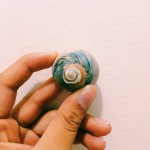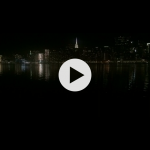Becker, Joshua. “7 Important Reasons to Unplug and Find Space”. becomingminimalist. Becomingminimalist, n.d. Web. 11 Nov 2015.
Becker established the notion that users of technology and its various networking media related sites cannot disconnect themselves or in a way becoming unavailable from them. In the article, Becker stipulates that together we have all forgotten that there is the option to power-off and remove ourselves from technology and these mediated spaces. Becker goes onto stating the various reason as to why we should remove ourselves from the presence of technology and also the way in which it benefits us, for example, “Powering-down combats the fear of missing out”.
This connects to my project because as mentioned the project will honing in on not only the physical changes becoming unavailable has on an individual but also the psychological effects as well. This article correlates with the proposed theory and goes onto supporting and giving detailed descriptions as to how unavailability effects our ability to participate and engage with others, things, and places outside social media.
Chiou, Wen-Bin, Lee, Chun-Chia, & Liao, Da-Chi. “Facebook Effects on Social Distress: Priming with Online Social Networking Thoughts Can Alter the Perceived Distress Due to Social Exclusion.” Science Direct (2015): 230-236. Web.
“Facebook Effects on Social Distress: Priming with Online Social Networking Thoughts Can Alter the Perceived Distress Due to Social Exclusion”, ventures on the premise to explore social networking sites (SNS) and how they either interfere with peoples interpretations of social exclusion experiences such as disconnecting from these sites. The experiment conducted in this article goes onto indicate that the disconnecting act or loss of online social networking caused the test subjects the feelings of distress. This experiment went onto prove that the connection with SNS’s also influence how people interpret information, connection amongst other, and the act of participating as well.
This article will allow my project to not only justify claims but use already gathered data to nullify presented claims on these very topics mentioned. This article will provide my research with strong examples of how SNS encourage changing behaviors of participation and attention but go as far as to change the psyche of a person to believe that if they were to disconnect of becoming unavailable from a SNS that they would be missing out on not just a potential source of social reconnect but viable information needed to be in connection with people, places, and things.
Cohen, James & Kenny, Thomas. “Creativity in the Online Environment.” Cohen, James & Kenny, Thomas. Producing New and Digital Media. Burlington: Focal Press, 2016. 10-44. Print.
“Creativity in the Online Environment” by Cohen and Kenny offers insight into various components of how to cultivate an online following and how to engage in certain SNS platforms. However, the part of the chapter that offers the most information pertinent to this research project is the section, “Participation in the Online Environment”. This section is a critical turning point in the chapter because it helps to understanding how much it takes in order to be considered a part of a discourse community.
This chapter and section will help to create more understanding of the project because it will help to show that by disconnecting from SNS not only effect participation, but understanding, creativity, and connection. This chapter will also be helpful in making the idea clear that participation is defined differently on social media than it is else where.
Ferrara, Emilio, and Zeyao Yang. “Measuring Emotional Contagion In Social Media.” Plos ONE 10.10 (2015): 1-14. Academic ;Search Complete. Web. 16 Nov. 2015.
Ferrara and Yang’s article, on “Measuring Emotional Contagion in Social Media” is an experiment measuring how content created online circulates and the way it changed how it impacts others emotions which goes onto to change how they interpret their surrounding people and things. This experiment embarked on premise that emotions created online are in a way spreadable in such a way that it takes on both negative and positive attributions as it circulates online. As mentioned in the article, the experiment raises ethical concerns due to its nature being a manipulation of people’s emotions as to accurately test the hypothesis of how social media influences emotions.
This article will help to justify the claim in the undergoing research project of the impacts social media has on the interpretations of people, places, and things. The article is a good source in helping establish the foundation for the research in the way it highlights that interaction online alters behavior and emotions. This will in turn help to further the research in helping to highlight the fact that it is SNS that change the way people express themselves and ultimately change the way they interpret emotions.
Jones, H. Rodney & Hanfer A. Christopher. “Attention Structures.” Jones, H. Rodney & Hanfer A. Christopher. Understanding Digital Literacies. New York: Routledge, 2012. 83-97. Print.
Jones and Hanfer’s take on “Attention Structures” allows their audience to understand all the parts of an internet that effect a persons ability to multitask and such forth. The chapter goes into deep detail about specific concepts such as cast switching, dual activity, and continual partial attention. All of these contribute to how the attention of individuals share or divide their attention in their space online. The way by which we grow and engage depends on the amount of time we spend giving certain allocations online different amounts of time. Attention structures online create a profile of your engagement and in turn creates a schedule of how one divides their attention.
This article is useful in providing a background of how an audiences attention structures are initially divided. In conducting an experiment of disconnecting oneself from SNS then there could be a record of how attention structures change and therefore give concrete evidence that a disconnect can and therefore will alter these structures.
Lee, Singyin. “Hongkait Techbology Design Inspiration.” Get Off The Internet: A Challenge to Reconnect With Yourself. N/A: Hongkait, 2012. Web . 6 Nov 2015
Lee’s article presents the idea of how disconnecting from online participation can open yourself to reconnecting with yourself. As introduced in the article the internet has taken over our lives. When not present in front of a computer we still find a way by either tablet or cell phone device to connect and participate online. This has become a problem and has gone on to create problems in our personal lives. We have been connected for so long through these mediated mediums that when we are to disconnect we feel anxious and perhaps even worry. In this article, Lee proposes ways to her audience in which they can disconnect from the web in order to find themselves once more.
This article connects to the research project that I will be conducting due to the fact that it gives support to claims made in the project such as attention structures, health (psychological), and participation with people, places, and things. The article also helps to raise more questions for the project daily vlogs such as: how does this disconnect challenge your originality? This article will help the project to emphasize key points and build upon ideas already presented.
Turner, Anthony. “Generation Z: Technology And Social Interest.” Journal Of Individual Psychology 71.2 (2015): 103-113. Academic Search Complete. Web. 16 Nov. 2015.
“Generation Z: Technology and Social Interest” by Anthony Turner highlights the special relationship that the Generation Z (children born from 1993-2005) has with technology– especially social media. The article thoroughly examines the livelihood of generation Z in conjunction with their attachment to their smartphones and social networking sites. The article also deeply investigates considerations such as demographics which play a big part in how much time generation Z spends engaging with social media. The article goes onto highlight that it is the development through these mediated mediums in which children of generation Z face the struggle of coping with detachment, and their ability to develop and practice social interests which means to actively participate without the need for mediation.
This article can help provide not only fundamental proof that social media has in fact changed the way by which we interact with others but also the way by which generation Z develops. The article is also very useful in the way that it gives causes and effects of the interaction with social media. The article helps this research to further elaborate that a disconnection from social media networks will ultimately cause changes in psychological behavior, attention, and participation because of how attached one becomes with social media networking sites.
Wagner, Lori Ann. “When Your Smartphone Is Too Smart For Your Own Good: How Social Media Alters Human Relationships.” Journal Of Individual Psychology 71.2 (2015): 114-121. Academic Search Complete. Web. 16 Nov. 2015.
Wagner’s article, “When Your Smartphone if Too Smart for Your Own Good: How Social Media Alters Human Relationships”, addressed the fact that humans have moved into the age where they prefer to interact via mediated communications such as SNS. The article makes the claim that in a sense humans have evolved from being the social creatures they once were however now they prefer to have a relationship through their devices. These devices have allowed people to connect in such a way that does not mirror the five senses which in turn has altered how they interact with people.
The article stipulates that through a mediated media are humans more trusting, interactive, engaged, and willing to participate whereas off of online SNS’s there is a hesitation in actions of participation and attention. This article helps the proposed research project by giving concrete evidence to back up claims made about attention and participation structures. Also, the article helps to entertain and praise the idea that the way people interpret people, places, and things are altered by way of SNS’s and other mediated communications. This article will help to give more clarity to just how much interaction has changed due to SNS.
Reflection
I found this exercise to be both helpful and overwhelming. My past experience of doing an annotated bibliography was in terms of doing a analog research paper. In this case I found it to be outdated for the type of project expected at the end. Although, it did enable me to think critically of how I will be using these documents it also caused me to become side track from the actual composite of my project.
I think that even though it was helpful, it was not for this project. It should expected that we conduct this type of analysis. All in all the experience was okay due to the fact that it allowed me to structure my project more and define more key points.

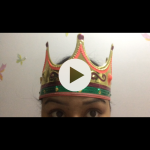


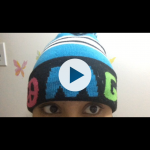


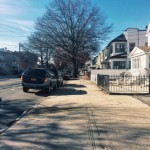




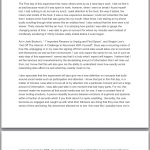

 I noticed about myself was the constant worry about what I was missing out on. As a guilty pleasure I read, “The Shade Room” (TSR), a celebrity blog that gives updates about trending celebrity stories. I have grown attached and soothed by this blog. It has been my way to unwind after a long days’ work or school. For the past four days however I have been lost and it worries me. I am worried that I will have to catch up on so much and I will also miss out so much. I have no idea what is going on and I have had to find a new ways to deal with my new time—coloring. In four days I have reassigned and invested my time in more creative outlets. I have never colored so much since the fourth grade but although it does occupy my time I still find myself worrying about missing out on some outrageous seflies or videos.
I noticed about myself was the constant worry about what I was missing out on. As a guilty pleasure I read, “The Shade Room” (TSR), a celebrity blog that gives updates about trending celebrity stories. I have grown attached and soothed by this blog. It has been my way to unwind after a long days’ work or school. For the past four days however I have been lost and it worries me. I am worried that I will have to catch up on so much and I will also miss out so much. I have no idea what is going on and I have had to find a new ways to deal with my new time—coloring. In four days I have reassigned and invested my time in more creative outlets. I have never colored so much since the fourth grade but although it does occupy my time I still find myself worrying about missing out on some outrageous seflies or videos. things. I notice the people around me, words on the wall, and even the objects on the ground. These things which I have gone months without noticing because my head would be buried in my phone; scrolling through social media. My attention to detail has caused me to become not only more aware of the things I do but the manner in which I do them. I pay more attention because I am not being drawn to or constantly stopping to check my SNS. I am more interested and invested in people and their stories because I have nothing to distract me with.
things. I notice the people around me, words on the wall, and even the objects on the ground. These things which I have gone months without noticing because my head would be buried in my phone; scrolling through social media. My attention to detail has caused me to become not only more aware of the things I do but the manner in which I do them. I pay more attention because I am not being drawn to or constantly stopping to check my SNS. I am more interested and invested in people and their stories because I have nothing to distract me with.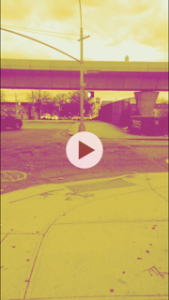 nk that I have been able to capture videos and pictures that represent these feelings and effects. In moving I plan on continuing to capture more videos and pictures of the day that represent and coincide with the blog post that goes along with it. I also plan on starting to put my short video together for the final presentation as to give myself enough time to edit.
nk that I have been able to capture videos and pictures that represent these feelings and effects. In moving I plan on continuing to capture more videos and pictures of the day that represent and coincide with the blog post that goes along with it. I also plan on starting to put my short video together for the final presentation as to give myself enough time to edit.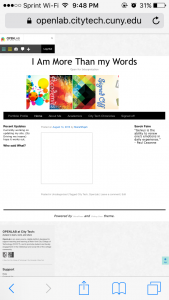 n working on my e-portfolio site as which will house the final project piece. I have been working hard on ‘The Sliding Doors’ theme and I believe I am finding some success.
n working on my e-portfolio site as which will house the final project piece. I have been working hard on ‘The Sliding Doors’ theme and I believe I am finding some success.
